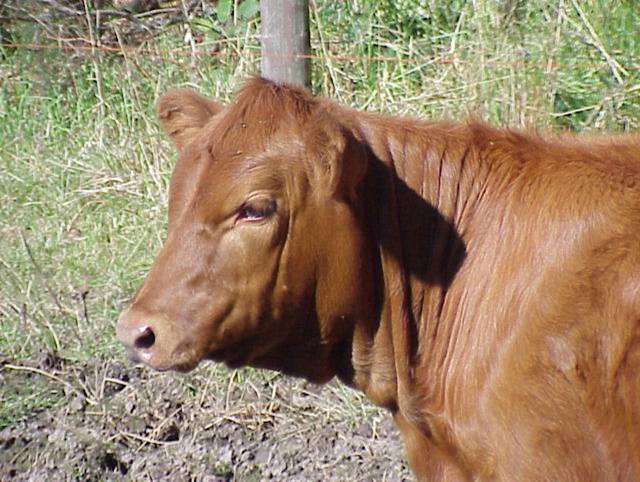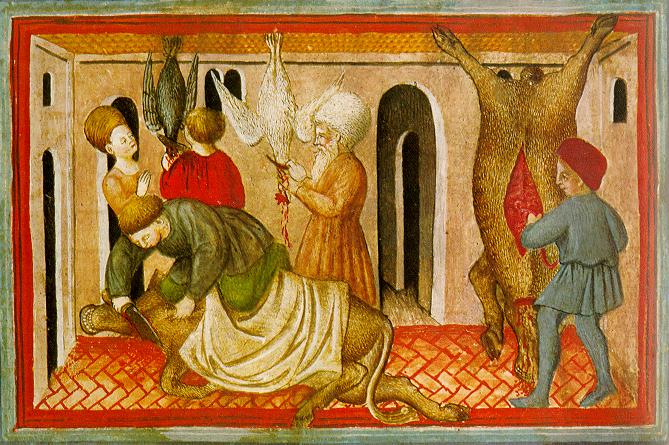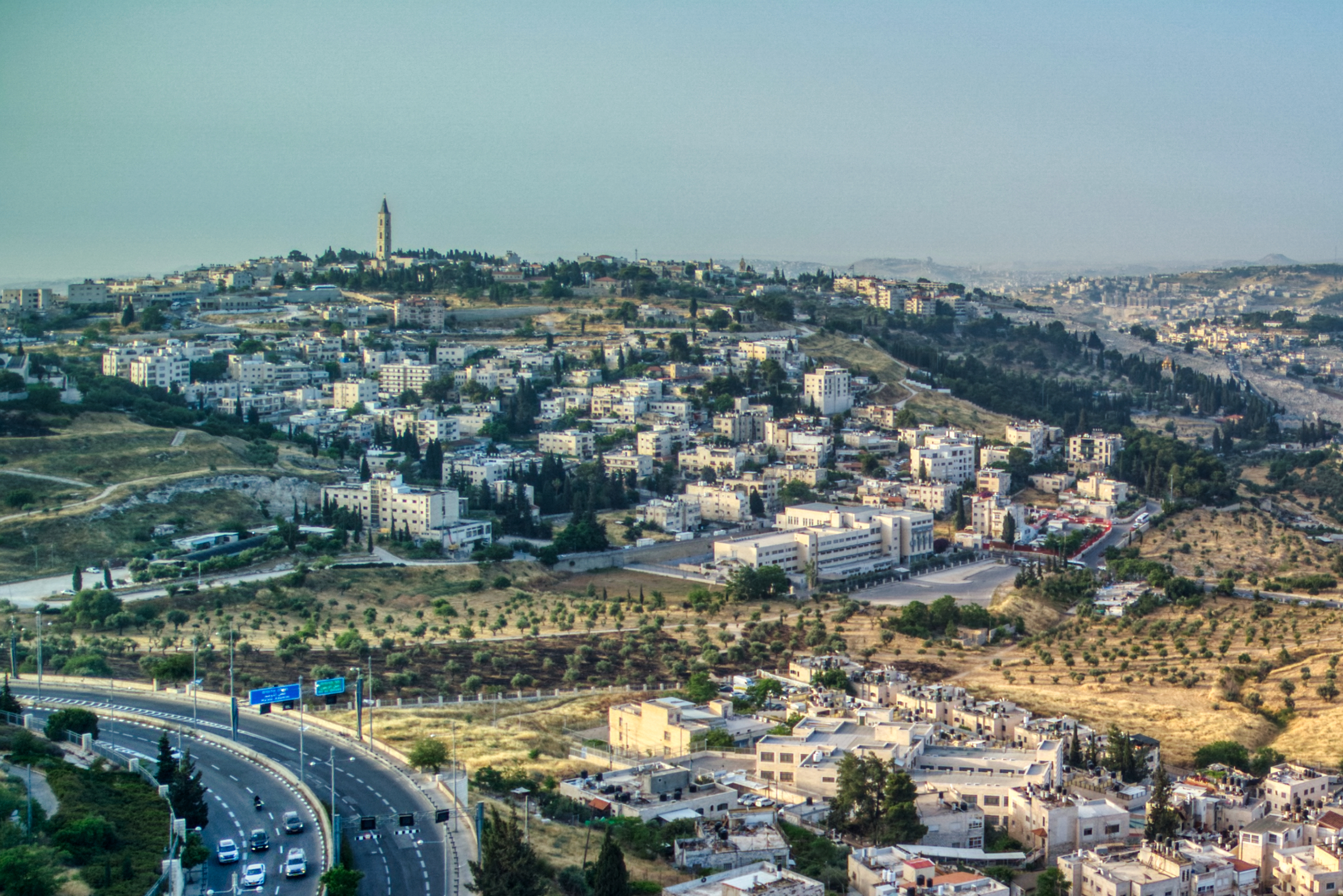|
Parah
Parah () is the name of a treatise in the Mishnah and the Tosefta, included in the order Tohorot. The Pentateuchal law ( Num. ) decrees that a red heifer, "wherein is no blemish, and upon which never came yoke," shall be burned and her ashes mixed with spring water, that the compound so obtained may be used to sprinkle and cleanse every one who becomes unclean. The burning of the heifer and the preparation of the ashes, as well as the fetching of the water and its mixture for sprinkling, were attended by strict ceremonies. The treatise Parah contains a detailed description of these ceremonies, as well as various regulations concerning the purity of the water for sprinkling and its different effects. In most editions the treatise is the fourth in the mishnaic order Tohorot, and is divided into twelve chapters, containing ninety-six paragraphs in all. Contents *Chapter 1: Contents. Age of the red heifer and of the young heifer (comp. Deut. ); explanation of the word "''shelas ... [...More Info...] [...Related Items...] OR: [Wikipedia] [Google] [Baidu] |
Red Heifer
The red heifer () was a reddish brown Cattle, cow sacrificed by Temple priests as a ritual purification, purification ritual in biblical times. Ritual in the Torah The red heifer offering is described in Book of Numbers, Numbers 19. The Torah specifies that the heifer in question must be without spots or blemish, and never wikt:yoke#Verb, yoked or milked. It is slaughtered and burned outside of the camp. Cedrus libani, Cedarwood, an herb called ezov, and wool kermes (dye), dyed scarlet are added to the fire, and the remaining ashes are placed in a vessel containing pure spring water. To purify a person, water of lustration, water from the vessel is sprinkled on them using a bunch of ezov, on the third and seventh day of the purification process. The Kohen who performs the ritual then himself becomes tumah and taharah, ritually impure and must then wash himself and his clothes in spring waters. Mishnah tractate The Mishnah, the central compilation of the Oral Torah in Rabb ... [...More Info...] [...Related Items...] OR: [Wikipedia] [Google] [Baidu] |
Tohorot
''Tohorot'' () is the sixth and last order of the Mishnah (also of the Tosefta and Talmud). This order deals with the clean/unclean distinction and family purity. This is the longest of the orders in the Mishnah. There are 12 tractates: #'' Keilim:'' (כלים "Vessels"); deals with a large array of various utensils and how they fare in terms of purity. 30 chapters, the longest in the Mishnah. #'' Oholot:'' (אוהלות "Tents"); deals with the uncleanness from a corpse and its peculiar property of defiling people or objects either by the latter "tenting" over the corpse, or by the corpse "tenting" over them, or by the presence of both corpse and person or object under the same roof or tent. #'' Nega'im:'' (נגעים "Plagues"); deals with the laws of the ''tzaraath''. #''Parah:'' (פרה "Cow"); deals largely with the laws of the Red Heifer ''(Para Adumah)''. #'' Tohorot:'' (טהרות "Purities"); deals with miscellaneous laws of purity, especially the actual mechanics of cont ... [...More Info...] [...Related Items...] OR: [Wikipedia] [Google] [Baidu] |
Ezov
Ezov (, some English-language Bibles transliterate as ''ezob'') is the Classical Hebrew name of a plant mentioned in the Hebrew Bible in the context of religious rituals. Ezov is described as a small plant found on or near walls, with an aromatic odor.Numbers 19:6''Jewish Encyclopedia'' Maimonides, Saadia Gaon and earlier Jewish commentators identified ''ezov'' with ''za'atar'', which principally referred to the herb ''Origanum syriacum'', which has aromatic and cleansing properties, grows wild in Israel, and can easily be bunched together to be used for sprinkling. Etymology The Septuagint translates Hebrew אֵזוֹב ''ezov'' as hyssop, and English translations of the Bible often follow this rendering. ''Ezov'' and the Greek word ὕσσωπος ''hyssops'' probably share a common origin. Rabin suggests that this ancient culture word originated in Asia Minor. While the catalyst for the spread of this culture word is unknown, Asia Minor may have been the place of ''Origanum' ... [...More Info...] [...Related Items...] OR: [Wikipedia] [Google] [Baidu] |
Mishnah
The Mishnah or the Mishna (; , from the verb ''šānā'', "to study and review", also "secondary") is the first written collection of the Jewish oral traditions that are known as the Oral Torah. Having been collected in the 3rd century CE, it is the first work of rabbinic literature, written primarily in Mishnaic Hebrew but also partly in Jewish Palestinian Aramaic. The oldest surviving physical fragments of it are from the 6th to 7th centuries. The Mishnah was literary redaction, redacted by Judah ha-Nasi probably in Beit She'arim (Roman-era Jewish village), Beit Shearim or Sepphoris between the ending of the second century CE and the beginning of the third century. Heinrich Graetz, dissenting, places the Mishnah's compilation in 189 CE (see: H. Graetz, ''History of the Jews'', vol. 6, Philadelphia 1898, p105), and which date follows that penned by Rabbi Abraham ben David in his "Sefer HaKabbalah le-Ravad", or what was then ''anno'' 500 of the Seleucid era. in a time when the p ... [...More Info...] [...Related Items...] OR: [Wikipedia] [Google] [Baidu] |
Temple Mount
The Temple Mount (), also known as the Noble Sanctuary (Arabic: الحرم الشريف, 'Haram al-Sharif'), and sometimes as Jerusalem's holy esplanade, is a hill in the Old City of Jerusalem, Old City of Jerusalem that has been venerated as a Sacred space, holy site for thousands of years, including in Judaism, Christianity and Islam. The present site is a flat plaza surrounded by retaining walls (including the Western Wall), which were originally built by Herod the Great, King Herod in the first century BCE for an expansion of the Second Temple, Second Jewish Temple. The plaza is dominated by two monumental structures originally built during the Rashidun and early Umayyad Caliphate, Umayyad caliphates after Siege of Jerusalem (636–637), the city's capture in 637 CE:Nicolle, David (1994). ''Yarmuk AD 636: The Muslim Conquest of Syria''. Osprey Publishing. the main Qibli Mosque, praying hall of al-Aqsa Mosque and the Dome of the Rock, near the center of the hill, which was com ... [...More Info...] [...Related Items...] OR: [Wikipedia] [Google] [Baidu] |
De'oraita And Derabanan
The Talmud uses many types of logical arguments. Some of the most common arguments and terms are discussed here. ''Chazakah'' (presumption) The term ''chazakah'' ( — literally, "strong") usually refers to the default assumption; i.e., what is assumed until there is evidence to the contrary. For example, if one is known to have owned real estate, it is assumed that he still owns it until proven otherwise. However, with movable items, the ''chazakah'' lies with whoever currently has the item in his possession, not with the one who had previously owned it. This principle also applies in ritual law. For example: Food known to be kosher maintains its status until there is evidence to the contrary. Also, one who engages in acts done only by '' kohanim'' is assumed to be a ''kohen'' himself, until proven otherwise (see Presumption of priestly descent). ''De'oraita'' and ''derabanan'' A law is ''de'oraita'' (Aramaic: דאורייתא, "of the Torah," i.e. scriptural) if it was given ... [...More Info...] [...Related Items...] OR: [Wikipedia] [Google] [Baidu] |
Temple In Jerusalem
The Temple in Jerusalem, or alternatively the Holy Temple (; , ), refers to the two religious structures that served as the central places of worship for Israelites and Jews on the modern-day Temple Mount in the Old City of Jerusalem. According to the Hebrew Bible, the Solomon's Temple, First Temple was built in the 10th century BCE, during the reign of Solomon over the Kingdom of Israel (united monarchy), United Kingdom of Israel. It stood until , when it was destroyed during the Siege of Jerusalem (587 BC), Babylonian siege of Jerusalem. Almost a century later, the First Temple was replaced by the Second Temple, which was built after the Neo-Babylonian Empire was conquered by the Achaemenid Empire, Achaemenid Persian Empire. While the Second Temple stood for a longer period of time than the First Temple, it was likewise destroyed during the Siege of Jerusalem (70 CE), Roman siege of Jerusalem in 70 CE. Projects to build the hypothetical "Third Temple" have not come to fruit ... [...More Info...] [...Related Items...] OR: [Wikipedia] [Google] [Baidu] |
Shechita
In Judaism, ''shechita'' (anglicized: ; ; ; also transliterated ''shehitah, shechitah, shehita'') is ritual slaughtering of certain mammals and birds for food according to ''kashrut''. One who practices this, a kosher butcher is called a ''shochet''. Biblical sources Deuteronomy 12:21 states that sheep and cattle should be slaughtered "as I have instructed you", but nowhere in the Torah are any of the practices of ''shechita'' described. Instead, they have been handed down in Rabbinic Judaism's Oral Torah, and codified in ''halakha''. Species The animal must be of a permitted species. For mammals, this is restricted to ruminants which have split hooves. For birds, although biblically any species of bird not specifically excluded in Deuteronomy 14:12–18 would be permitted, doubts as to the identity and scope of the species on the biblical list led to rabbinical law permitting only birds with a tradition of being permissible. Fish do not require kosher slaughter to be ... [...More Info...] [...Related Items...] OR: [Wikipedia] [Google] [Baidu] |
Sadducees
The Sadducees (; ) were a sect of Jews active in Judea during the Second Temple period, from the second century BCE to the destruction of the Second Temple in 70 CE. The Sadducees are described in contemporary literary sources in contrast to the two other major sects at the time, the Pharisees and the Essenes. Josephus, writing at the end of the 1st century CE, associates the sect with the upper echelons of Judean society. As a whole, they fulfilled various political, social, and religious roles, including maintaining the Temple in Jerusalem. The group became extinct sometime after the Siege of Jerusalem (70 CE), destruction of the Second Temple in 70 CE. Etymology The English term entered via Latin from . The name Zadok is related to the root , (to be right, just), which could be indicative of their aristocratic status in society in the initial period of their existence. History According to Abraham Geiger, the Sadducee sect of Judaism derived their name from that ... [...More Info...] [...Related Items...] OR: [Wikipedia] [Google] [Baidu] |
Miḳweh
A mikveh or mikvah (, ''mikva'ot'', ''mikvot'', or (Ashkenazic) ''mikves'', lit., "a collection") is a bath used for ritual immersion in Judaism to achieve ritual purity. In Orthodox Judaism, these regulations are steadfastly adhered to; consequently, the mikveh is central to an Orthodox Jewish community. Conservative Judaism also formally holds to the regulations. The existence of a mikveh is considered so important that, according to halacha, a Jewish community is required to construct a kosher mikveh even before building a synagogue, and must go to the extreme of selling Torah scrolls, or even a synagogue if necessary, to provide funding for its construction. Etymology Formed from the Semitic root ק-ו-ה (''q-w-h'', "collect"). In the Hebrew Bible, the word is employed in the sense of "collection", including in the phrase מקוה המים (''miqwêh hammayim'', "collection of water") in Genesis 1:10; Exodus 7:19; and Leviticus 11:36. Ben Sira is the earliest author ... [...More Info...] [...Related Items...] OR: [Wikipedia] [Google] [Baidu] |
Mount Of Olives
The Mount of Olives or Mount Olivet (; ; both lit. 'Mount of Olives'; in Arabic also , , 'the Mountain') is a mountain ridge in East Jerusalem, east of and adjacent to Old City of Jerusalem, Jerusalem's Old City. It is named for the olive, olive groves that once covered its slopes. The southern part of the mount was the Silwan necropolis, attributed to the elite of the ancient Kingdom of Judah. The western slopes of the mount, those facing Jerusalem, have been used as a Mount of Olives Jewish Cemetery, Jewish cemetery for over 3,000 years and holds approximately 150,000 graves, making it central in the tradition of Jewish cemetery, Jewish cemeteries. Atop the hill lies the State of Palestine, Palestinian neighbourhood of At-Tur (Mount of Olives), At-Tur, a former village that is now part of East Jerusalem. Several key events in the life of Jesus, as related in the Gospels, took place on the Mount of Olives, and in the Acts of the Apostles it is described as the place from which J ... [...More Info...] [...Related Items...] OR: [Wikipedia] [Google] [Baidu] |
Moses
In Abrahamic religions, Moses was the Hebrews, Hebrew prophet who led the Israelites out of slavery in the The Exodus, Exodus from ancient Egypt, Egypt. He is considered the most important Prophets in Judaism, prophet in Judaism and Samaritanism, and one of the most important prophets in Christianity, Prophets and messengers in Islam, Islam, the Manifestation of God (Baháʼí Faith)#Known messengers, Baháʼí Faith, and Table of prophets of Abrahamic religions, other Abrahamic religions. According to both the Bible and the Quran, God in Abrahamic religions, God dictated the Mosaic Law to Moses, which he Mosaic authorship, wrote down in the five books of the Torah. According to the Book of Exodus, Moses was born in a period when his people, the Israelites, who were an slavery, enslaved minority, were increasing in population; consequently, the Pharaohs in the Bible#In the Book of Exodus, Egyptian Pharaoh was worried that they might ally themselves with New Kingdom of Egypt, Eg ... [...More Info...] [...Related Items...] OR: [Wikipedia] [Google] [Baidu] |








